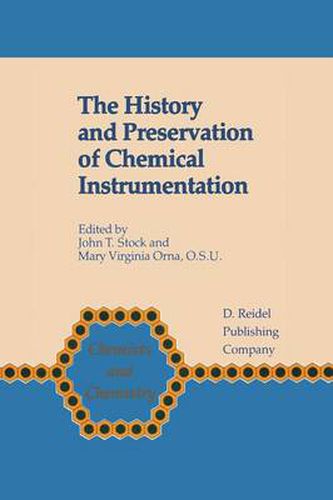Readings Newsletter
Become a Readings Member to make your shopping experience even easier.
Sign in or sign up for free!
You’re not far away from qualifying for FREE standard shipping within Australia
You’ve qualified for FREE standard shipping within Australia
The cart is loading…






This title is printed to order. This book may have been self-published. If so, we cannot guarantee the quality of the content. In the main most books will have gone through the editing process however some may not. We therefore suggest that you be aware of this before ordering this book. If in doubt check either the author or publisher’s details as we are unable to accept any returns unless they are faulty. Please contact us if you have any questions.
The development of chemistry, like that of the other fields of science and technology, has depended greatly upon the availability of instruments. Accordingly, the study of the history of instrumentation is a major area in any survey of the progress in this science. Recognizing this fact, the Division of the History of Chemistry of the American Chemical Society organized and held a very successful symposium on the history of chemical instrumentation during the Washington, D.C. National Meeting in 1979. Re~arks, both formal and informal, made during this symposium stressed points that soon become obvious to anyone who looks at the ancestry of present-day instruments . In some cases, the total history is measured in years, rather than in centuries . Chemical instrumentation, by no means confined to the laboratory, is vital in industry. There is a natural tendency to discard an item of any kind when a newer version is acquired. Often, to discard means to scrap . If the item scrapped is an instrument that is unique - sometimes the last of its kind - we have a permanent artefactual gap in the history of science.
$9.00 standard shipping within Australia
FREE standard shipping within Australia for orders over $100.00
Express & International shipping calculated at checkout
This title is printed to order. This book may have been self-published. If so, we cannot guarantee the quality of the content. In the main most books will have gone through the editing process however some may not. We therefore suggest that you be aware of this before ordering this book. If in doubt check either the author or publisher’s details as we are unable to accept any returns unless they are faulty. Please contact us if you have any questions.
The development of chemistry, like that of the other fields of science and technology, has depended greatly upon the availability of instruments. Accordingly, the study of the history of instrumentation is a major area in any survey of the progress in this science. Recognizing this fact, the Division of the History of Chemistry of the American Chemical Society organized and held a very successful symposium on the history of chemical instrumentation during the Washington, D.C. National Meeting in 1979. Re~arks, both formal and informal, made during this symposium stressed points that soon become obvious to anyone who looks at the ancestry of present-day instruments . In some cases, the total history is measured in years, rather than in centuries . Chemical instrumentation, by no means confined to the laboratory, is vital in industry. There is a natural tendency to discard an item of any kind when a newer version is acquired. Often, to discard means to scrap . If the item scrapped is an instrument that is unique - sometimes the last of its kind - we have a permanent artefactual gap in the history of science.